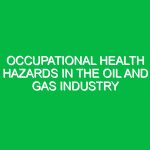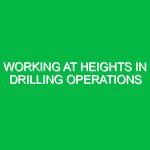In the intricate world of construction, manufacturing, and various industrial sectors, rigging and lifting operations stand as critical processes that ensure efficiency and safety. Rigging involves the use of equipment and techniques to lift and move loads, while lifting operations pertain to the actual act of raising and transporting these loads. Safety in these operations is paramount, as the consequences of negligence can be catastrophic, leading to injuries, fatalities, and significant financial losses. This article delves into the essential aspects of Rigging and Lifting Operations Safety, exploring the hazards involved, best practices, and the regulatory framework that governs these activities.
Understanding Rigging and Lifting Operations Safety
Rigging and lifting operations safety is not merely about following protocols; it’s about creating an environment where every worker understands the risks and knows how to mitigate them. The relevance of safety in this domain cannot be overstated. According to the Occupational Safety and Health Administration (OSHA), incidents related to lifting operations account for a significant percentage of workplace injuries. These injuries can be physical, such as fractures or sprains, or psychological, stemming from the stress of working in hazardous conditions.
Defining the Domain
At its core, rigging refers to the equipment used to lift heavy loads, including slings, shackles, and hoists. Lifting operations encompass the entire process, from planning the lift to executing it safely. Proper rigging ensures that loads are secure, while effective lifting operations minimize the risk of accidents. Both aspects require a comprehensive understanding of physics, engineering principles, and safety protocols, making training indispensable.
Identifying Hazards in Rigging and Lifting Operations
Every lifting operation is fraught with potential hazards. Recognizing these dangers is the first step toward implementing effective safety measures. Below are some common hazards associated with rigging and lifting operations:
1. Equipment Failure
Equipment failure can occur due to wear and tear, improper maintenance, or using the wrong equipment for a specific job. For instance, a frayed sling might snap under tension, resulting in dropped loads. Regular inspections and adherence to manufacturer guidelines are crucial in preventing such failures.
2. Load Instability
Improperly secured loads can shift during lifting, causing instability. It’s essential to assess the center of gravity and use appropriate rigging techniques to ensure that loads remain balanced throughout the lifting process. A real-world example is the 2018 incident in a construction site in Texas, where a poorly secured beam shifted, leading to a serious accident that injured several workers.
3. Environmental Factors
Wind, rain, and other environmental conditions can significantly impact lifting operations. For instance, lifting operations in windy conditions can cause swinging loads, increasing the risk of accidents. It’s vital to monitor weather conditions and halt operations if they become unsafe.
4. Human Error
Human error remains a leading cause of accidents in rigging and lifting. Factors like inadequate training, poor communication, or rushing a job can lead to mistakes. For example, a seasoned rigger once shared how a miscommunication during a lifting operation led to a near-miss incident, emphasizing the importance of clear, concise communication among team members.
5. Falling Objects
Falling objects are a significant risk in lifting operations. If a load is not properly secured, it can fall from height, posing a danger to workers below. Implementing exclusion zones and using safety nets can help mitigate this risk.
Safety Precautions and Best Practices
With a clear understanding of the hazards, the next step is to implement safety precautions and best practices. Here are actionable tips to enhance safety in rigging and lifting operations:
1. Comprehensive Training
Training is the cornerstone of safety in rigging and lifting operations. All personnel involved should undergo thorough training on equipment use, load calculations, and safety protocols. Regular refresher courses can keep skills sharp. For example, a construction company that invested in ongoing training saw a 40% reduction in accidents over three years.
2. Proper Load Assessment
Before any lift, assess the load’s weight, dimensions, and center of gravity. Use load charts and consult with engineers if necessary. This assessment is crucial to selecting the right equipment and rigging methods.
3. Regular Equipment Inspections
Implement a routine inspection schedule for all rigging equipment. Look for signs of wear, such as frayed slings or corroded hardware. Keeping records of inspections can help ensure accountability and compliance with safety standards.
4. Clear Communication
Establish clear communication protocols among all team members. Use hand signals or two-way radios to convey critical information during lifting operations. A well-coordinated team is less likely to make errors.
5. Environmental Awareness
Constantly monitor the environmental conditions affecting lifting operations. Wind speed, precipitation, and visibility can all impact safety. If conditions deteriorate, be prepared to shut down operations until they improve.
Regulatory Standards Governing Rigging and Lifting Operations
Understanding the regulatory landscape is vital for ensuring compliance and safety in rigging and lifting operations. Several key regulations and standards govern these practices:
1. OSHA Regulations
The Occupational Safety and Health Administration (OSHA) has established standards specifically for rigging and lifting operations. Key regulations include 29 CFR 1926.1400, which outlines the requirements for cranes and derricks in construction. Compliance with these regulations is not just a legal obligation; it’s a commitment to worker safety.
2. ASME Standards
The American Society of Mechanical Engineers (ASME) publishes guidelines that set benchmarks for the design, maintenance, and operation of lifting equipment. Standards such as ASME B30.9 for slings and ASME B30.5 for mobile cranes are essential references for ensuring safety in the industry.
3. ANSI Standards
The American National Standards Institute (ANSI) provides additional standards relevant to lifting operations. These standards address equipment specifications and operational practices, helping organizations maintain high safety standards.
Conclusion
Rigging and lifting operations safety is an integral part of the Health, Safety, and Environment (HSE) domain. By understanding the potential hazards, implementing robust safety practices, and adhering to regulatory standards, organizations can create a safer workplace. The lessons learned from past incidents highlight the importance of vigilance and continuous improvement in safety protocols. Investing in training and fostering a culture of safety can significantly reduce risks, ensuring that every lifting operation is executed with precision and care. Ultimately, the goal is to protect workers, minimize accidents, and promote a culture of safety that resonates throughout the industry.


